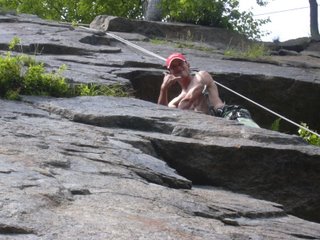
Yesterday, I was looking though my workout log and laughing at my goals from last March. In Lilliputian black scrawl, it looks like this:
“Goals: Sub-8:00 Fran w/ 65#, move up to 95# as soon as achieved. Sub-21:00 three mile run, need to add distance to current runs—1 day/week. 425# deadlift = 2.5x bodyweight. C&J 135#. Snatch like a pro w/ 45# bar.”
Aside from the “snatching like a pro” thing, I’ve decimated these goals. Without a doubt, the reason is increased power output over time. This invariably correlates to increased fitness, as we’ve demonstrated again and again.
Let’s take a look. I’m going to compare the power outputs of a typical three workout cycle in March with those of a similar cycle in December. (I haven’t performed these calculations beforehand, so the results will be a surprise.)
We’ll take three workouts from each month, selected to make the calculations relatively easy.
Using a “Fran” time of 8:35, a “Grace” time of 16:00 (using a 65 and 95 pound barbell, respectively), and an “Angie” time of 28:38, we get an average of 34.80 ft-lbs/second for the month of March.
In December, a 20 minute AMRAP (5 press/5 push press/5 push jerk) with a 75-pound barbell, a 5:56 “Fran”, and a 9-round “Chelsea” yield an average output of 77.50 ft-lbs/second.
Clearly, my power output has increased dramatically in nine months. This wasn’t entirely intentional. Rather, it’s the product of following the Crossfit Method and incorporating all kinds of strength movements, a la the ME Black Box.
I encourage you use a similar long-term perspective when examining your performance. Day-to-day, we get caught up in the psychology of fitness. Single performances suck, and our body image can dictate our attitude toward fitness. Nonetheless, training is not accomplished over days and weeks, but rather over months and years. Individual efforts add up to something more in the long run.
There is an assumption underlying this principal—you’ve got to keep training. This requires you to remain injury-free. If you’re feeling it everywhere, take some time off. Remember that one day without training is better than two months in rehabilitation.
Take your training log, wander over to the Performance Menu Power Output Calculator, and do some number crunching of your own. Hopefully, your results will encourage you to take the long view.
Go faster!



































